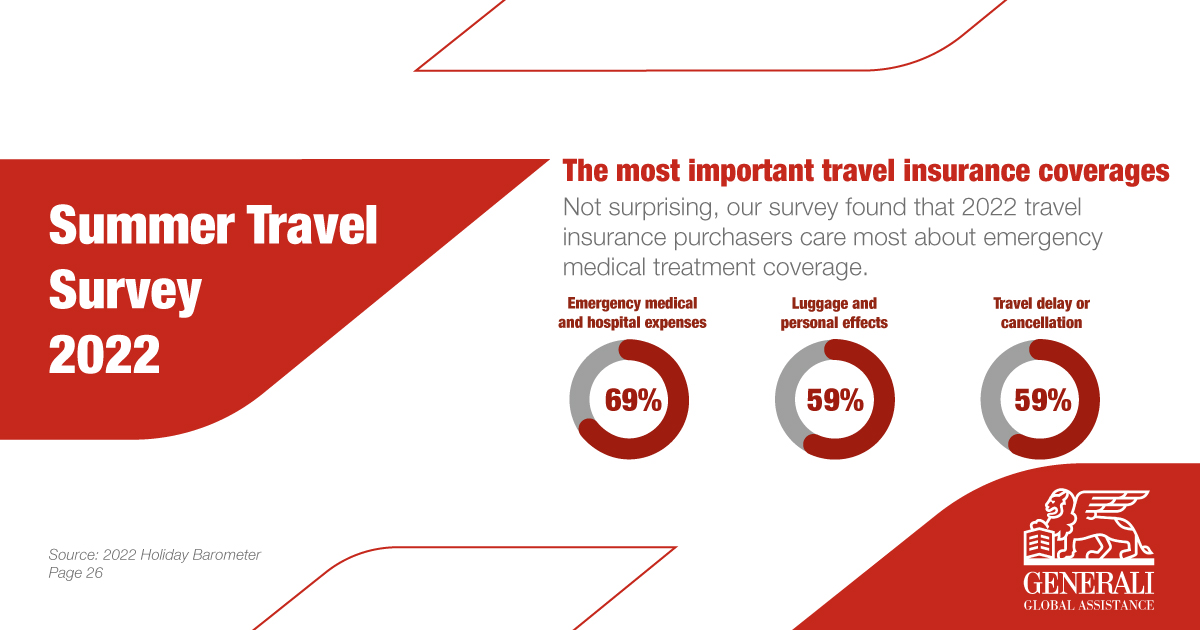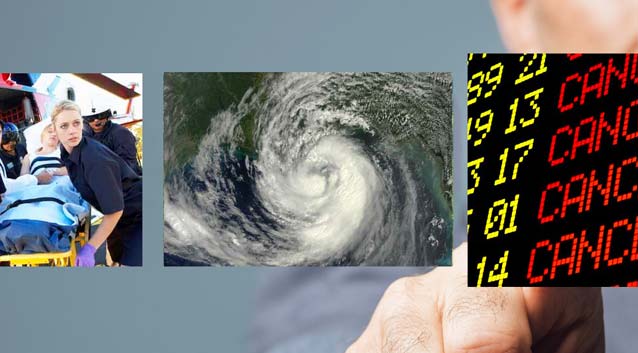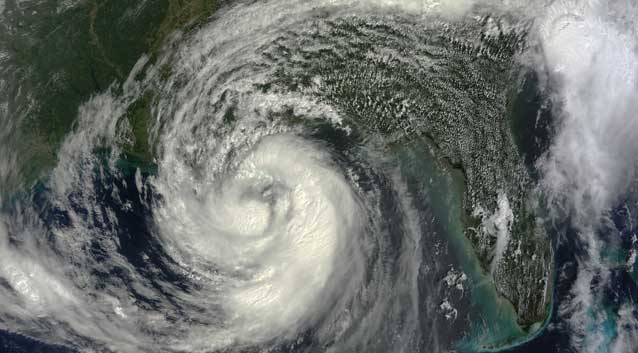2022 Summer Travel Trends: What’s Changed?

Every year, we conduct a worldwide summer travel survey to get a sense of how many people are planning summer trips and what those trips will look like. We call this survey our annual Holiday Barometer—we ask questions about where travelers are heading, how much they’re planning to spend, what they want to do with their time once they arrive at their destination, and other details. Executed in partnership with world renowned market research firm, Ipsos, the study includes approximately 1,000 respondents from each country surveyed. This year was our 21st year conducting the survey and it spanned 15 different countries, for a total of approximately 15,000 interviews.
The global travel landscape has, of course, looked a little different in the past couple of years. As a result, we started asking different types of questions to try and understand what travelers have been worried about, what travelers are looking forward to, and when people around the world expect travel to get back to normal. We were happy to see this year’s results align more closely with what we would expect to see during a typical year, and in many ways give shape to trends that we haven’t seen since before the COVID-19 pandemic. While not necessarily surprising, these trends are encouraging all the same and yet another reason for the industry as a whole to keep building momentum and optimism as we look to the future.
More Travelers, Bigger Budgets
In both 2018 and 2019, 68% of survey respondents in the U.S. were planning a summer trip. In 2021, that number was at 50%. This year shows steady signs of recovery with 60% of U.S. respondents traveling this summer. Not only are more people traveling, average budgets are also up 19% at $2,758. Summer travel plans are trending positively for travelers across Europe and in Thailand as well, with 71% of Europeans taking a trip, the highest number in 15 years, and 69% of Thai travelers taking a trip, up 25 points compared to 2021. European budgets are up 14% this year and Thai budgets are up 18%. Half of U.S. travelers indicated they will spend more this year on their summer plans.
Typical Trip Lengths and Booking Windows
When it comes to how far in advance travelers are making plans and how long they plan to be away, this year looks a lot like years past. Worldwide, travelers are taking one and a half to two week-long trips and, for the most part, booking at least two months out. These tendencies align with pre-pandemic travel. In 2019, the average trip length was just under one and a half weeks for U.S. travelers and just under two weeks for Europeans. Nearly 80% of U.S. travelers and three quarters of European travelers booked their trips at least one month in advance that year. Consistencies with pre-pandemic travel may suggest the persistence of the traditional leisure summer vacation, even as flexcation plans continue to rise with nearly a third of U.S. travelers and almost a quarter of Europeans planning to work while away this summer.

Shifting Concerns
Worldwide, people are notably less worried about COVID-19, particularly in western countries and particularly as it relates to health. While many are still worried about the impact that the pandemic could have on their overall health and the health of friends and family members, economic stressors have become more widespread among travel-related concerns. In the U.S., the two most popular reasons for not traveling this year were not being able to afford it and opting to save money instead. European, Canadian and Australian respondents also selected these two reasons more than any other and the most prevalent concern impacting respondents’ desire to travel in all countries surveyed was inflation and price increases. Thailand, the only Eastern country included in the survey, was the exception. Despite having the highest vaccination rate of any other surveyed country, Thai respondents continue to rank COVID-19 as the most pressing concern and fear of the virus tied for the second most popular reason to not travel this year. Even so, despite the relatively high level of caution surrounding the pandemic, Thai respondents exhibited the largest year over year increase in summer travel rates, with a 25-point increase from last year. Thai travelers are also the most excited about traveling compared to all other regions, with 77% saying they are very happy and excited to travel this year.
Another piece of good news is that, setting this year’s anomalies aside, economic concerns are not uncommon during normal years. In 2019, budget was the top motivating factor among U.S. travelers when choosing their destination. This year, it ranked number one among European, Canadian and Australian travelers. Interestingly, budget clocked in at the number two spot among U.S. travelers while the opportunity to experience leisure or cultural activities ranked number one. It seems that despite this year’s economic pressures, after two years of isolation periods and travel restrictions, U.S. travelers are prioritizing the quality of the experience this summer, even more so than budget.

Summer Trends
When looking at this year’s summer travel trends, a few key patterns emerge: a heightened interest in international and air travel, along with a return to cities. While 34% of U.S. travelers are staying in the states, an impressive 36% indicated they’re taking international trips. Top destinations include Mexico, Canada and Europe, specifically France, Italy and the U.K. Similarly, more travelers will fly to their destinations compared to last year, with 43% of U.S. travelers choosing this mode of transport, an increase of five points, while 48% will drive their car, a decrease of seven points. This transportation trend is shared by European and Thai travelers as well, with 33% of Europeans opting to fly, an 11-point increase, and 46% of Thai travelers doing the same, a four-point increase.
Airlines aren’t the only suppliers who can expect a better year in 2022. In terms of lodging, fewer travelers are opting to stay with family and friends this summer and this choice among accommodation options is down six points in both the U.S. and in Europe. In the U.S., 52% of travelers are staying in hotels and 20% are booking vacation rentals. In Europe, 46% are making hotel reservations and 30% are staying at a vacation rental.
Interestingly, cities are the preferred destination type among U.S. travelers this summer, with city destinations taking the top spot over the typical pre-pandemic beach vacation favorite. In the U.S., city trips are up nine points compared to 2021, with 44% of travelers choosing this type of trip compared to the 42% heading to the beach. Other popular choices include rural/countryside vacations (28%) and trips to the mountains (26%).
Looking for more summer travel trends? Watch our webinar for more 2022 survey results.

Why Travel Insurance
With international, air, and city travel all showing significant improvements this year, there are lots of reasons to get excited about travel in 2022. A better year than we’ve seen in a few also does not mean travel cautions and concerns have entirely subsided. When asked about travel concerns specifically, 41% of U.S. travelers expressed worry about an epidemic outbreak, 40% were concerned about getting sick on their trip, another 40% were worried about not being able to participate in certain activities while traveling, and 38% were concerned about bad weather. Having to quarantine during travel, running out of money, unplanned delays, and getting robbed or losing valuables all also received high response rates, with 37% of travelers indicating they were concerned about each of these possibilities.
Significant signs of travel concerns can be troubling, but it’s important to remember that travel, by nature, can be a little stressful and travelers are inevitably prone to having a few worries, even during normal years. This is where travel insurance can help. The pandemic spurred a piqued interest in travel insurance and many travelers now aren’t only interested in the benefits that a plan can provide, they also expect and require that certain coverages be offered to them in order to feel safe traveling this summer. Such coverages include trip cancellation for COVID-19 sickness (required by 22% of survey respondents) and medical assistance and repatriation for COVID-19 while traveling (required by 18%). Of those that plan to purchase coverage, 69% of travelers say that having coverage for emergency medical and hospital expenses is important, the most frequently selected coverage. Having coverage for luggage and personal effects was also a popular selection, along with having coverage for travel delay or cancellation, with each deemed important by 59% of those who intend to buy a plan.
Offering travel insurance from Generali Global Assistance is a simple and easy way to help travelers get the additional protection that they seek. Our plans provide coverage for 20+ events that can cancel or interrupt a trip and most plans also include coverage for baggage loss, damage, theft or delay. Perhaps most importantly, our plans can also help travelers with 24/7 emergency medical assistance and transportation, facilitated by our global network of providers and managed by our in-house medical team of three doctors and 25 nurses.
To make the most of your travel insurance program, reach out to your dedicated account manager. Your account management team can schedule a customized training session for you and your staff, provide you with complimentary sales and marketing materials, and more.
B000812208

 The 6 Top Travel Emergencies and How To Deal With Them
The 6 Top Travel Emergencies and How To Deal With Them
 Hurricane Kits Explained
Hurricane Kits Explained